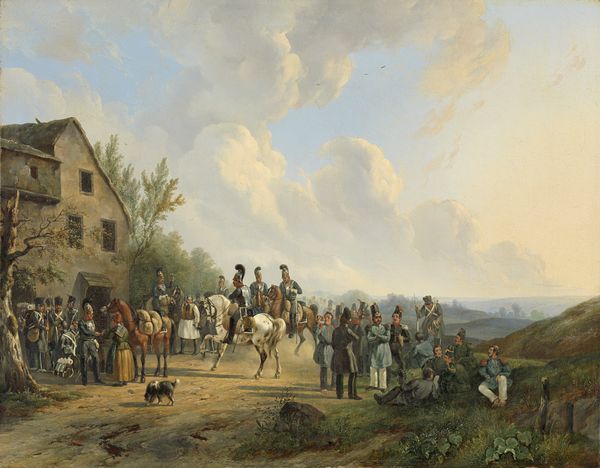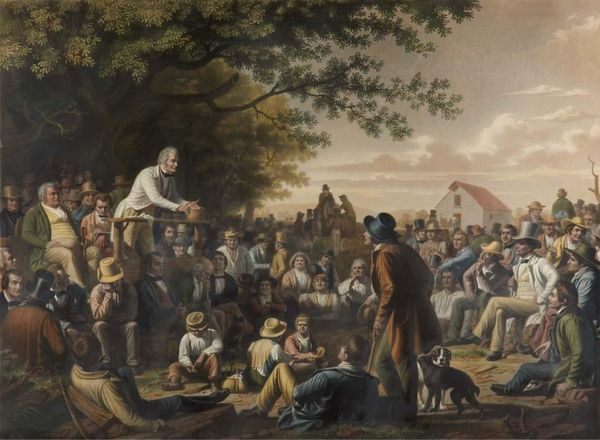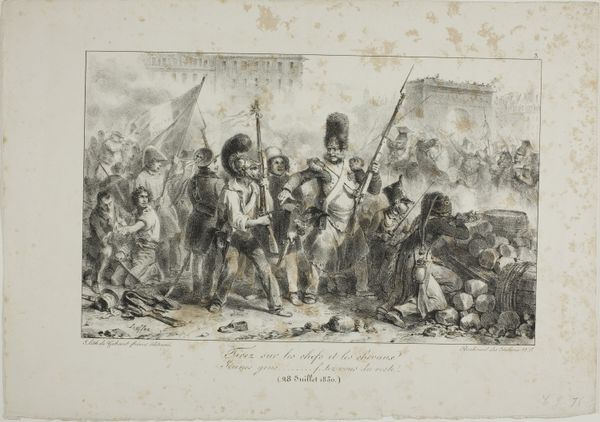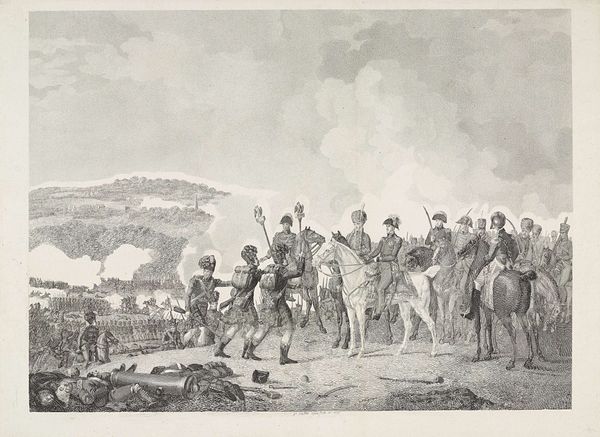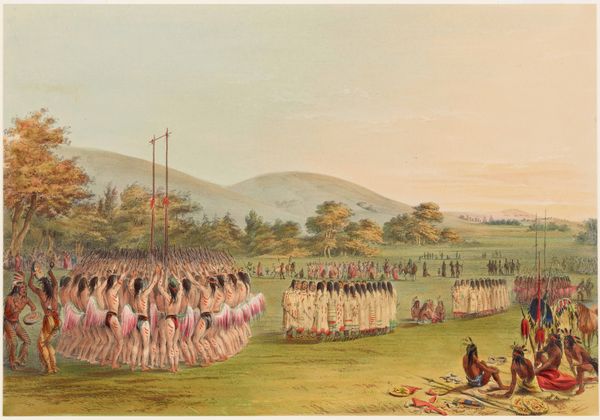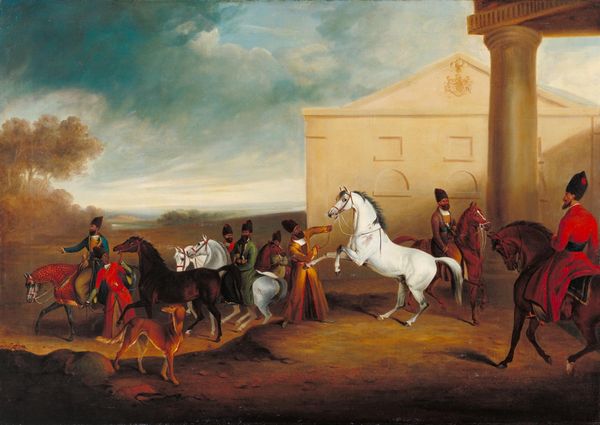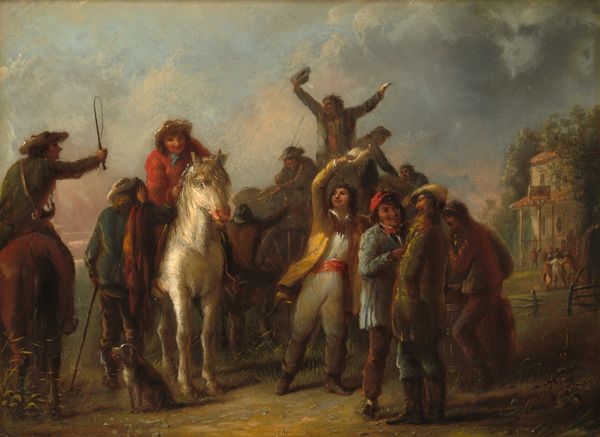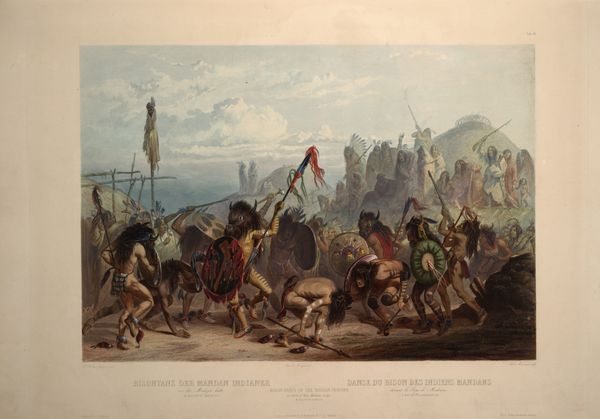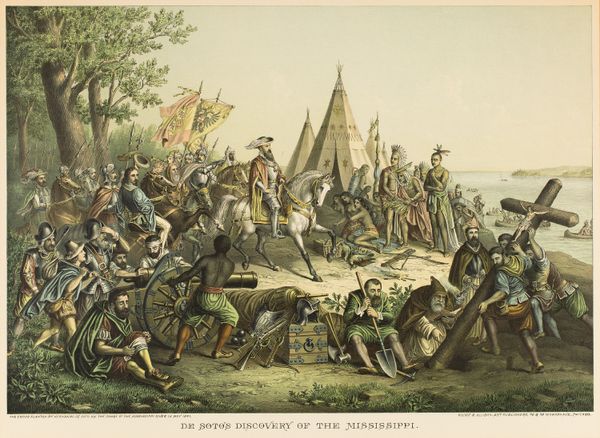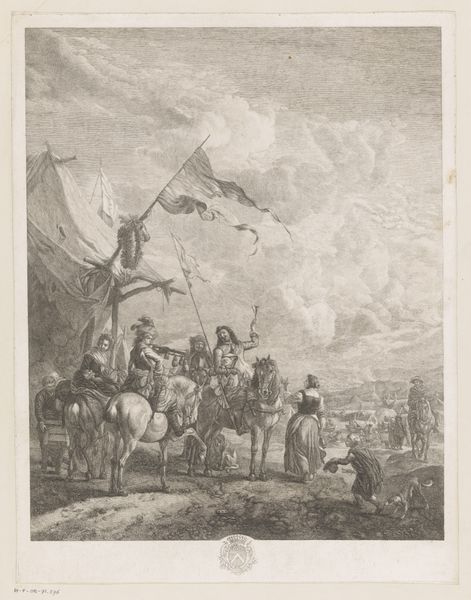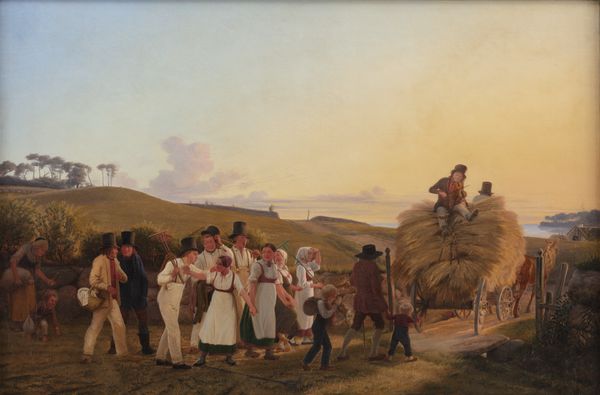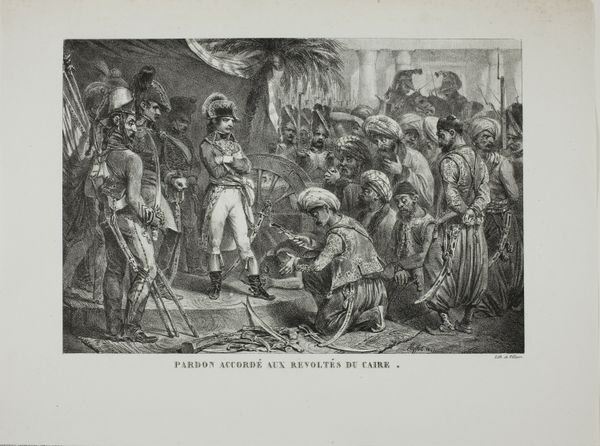
The Arrest of Diepo Negoro by Lieutenant-General Baron De Kock c. 1830 - 1835
0:00
0:00
nicolaaspieneman
Rijksmuseum
painting, oil-paint
#
portrait
#
dutch-golden-age
#
painting
#
oil-paint
#
oil painting
#
group-portraits
#
romanticism
#
orientalism
#
history-painting
#
academic-art
#
realism
Dimensions: height 75.8 cm, width 98.7 cm, depth 3.3 cm, height 111 cm, width 134 cm, thickness 14 cm
Copyright: Rijks Museum: Open Domain
Nicolaas Pieneman painted "The Arrest of Diepo Negoro by Lieutenant-General Baron De Kock" with oil on canvas. Painted during the 19th century, this work offers a window into the colonial history of the Dutch East Indies, now Indonesia. The painting depicts the capture of Prince Diponegoro, a Javanese leader who resisted Dutch colonial rule. It’s a moment heavy with power dynamics, framed by the stark contrast between the Dutch colonizers and the Javanese people. Pieneman, a Dutch artist, captures a scene rife with cultural tension and inequality. The image is both a historical record and a statement on colonial authority. The painting invites reflection on themes of resistance, cultural identity, and the lasting impacts of colonialism. What do you think of this portrayal of power and submission? How does it make you feel?
Comments
rijksmuseum about 2 years ago
⋮
Prince Diepo Negoro was the most important Javanese leader in the Java War (1825–1830). Although the Dutch promised him safe conduct, he was arrested during the peace negotiations. Pieneman highlighted this moment from the Dutch perspective. He did not show the betrayal, but rather Diepo Negoro ‘submitting’ to Dutch authority and taking leave of his defeated followers. The self-assured Dutch commanders stand on the steps. The Dutch flag flutters above.
Join the conversation
Join millions of artists and users on Artera today and experience the ultimate creative platform.
